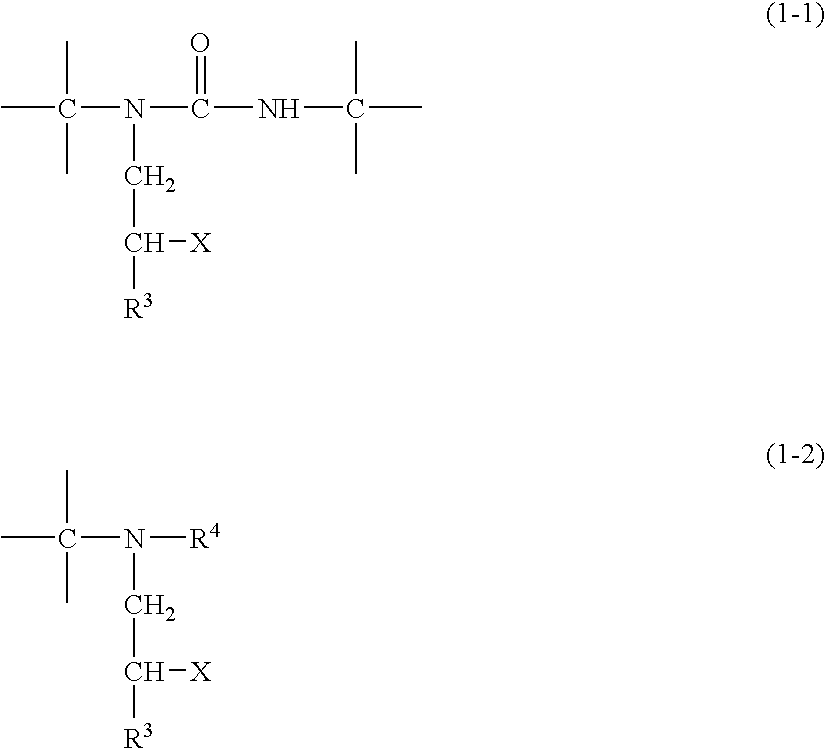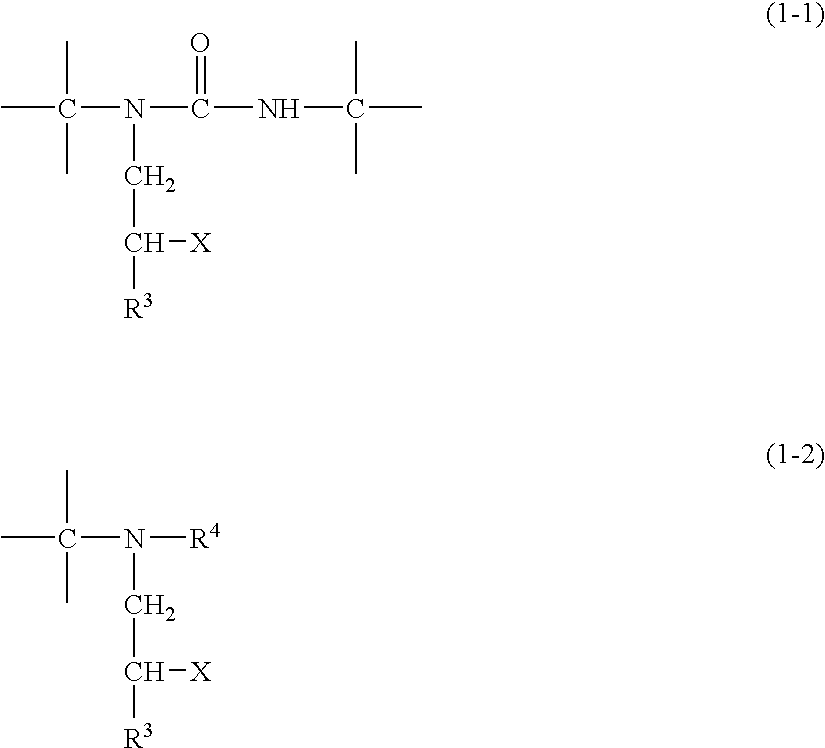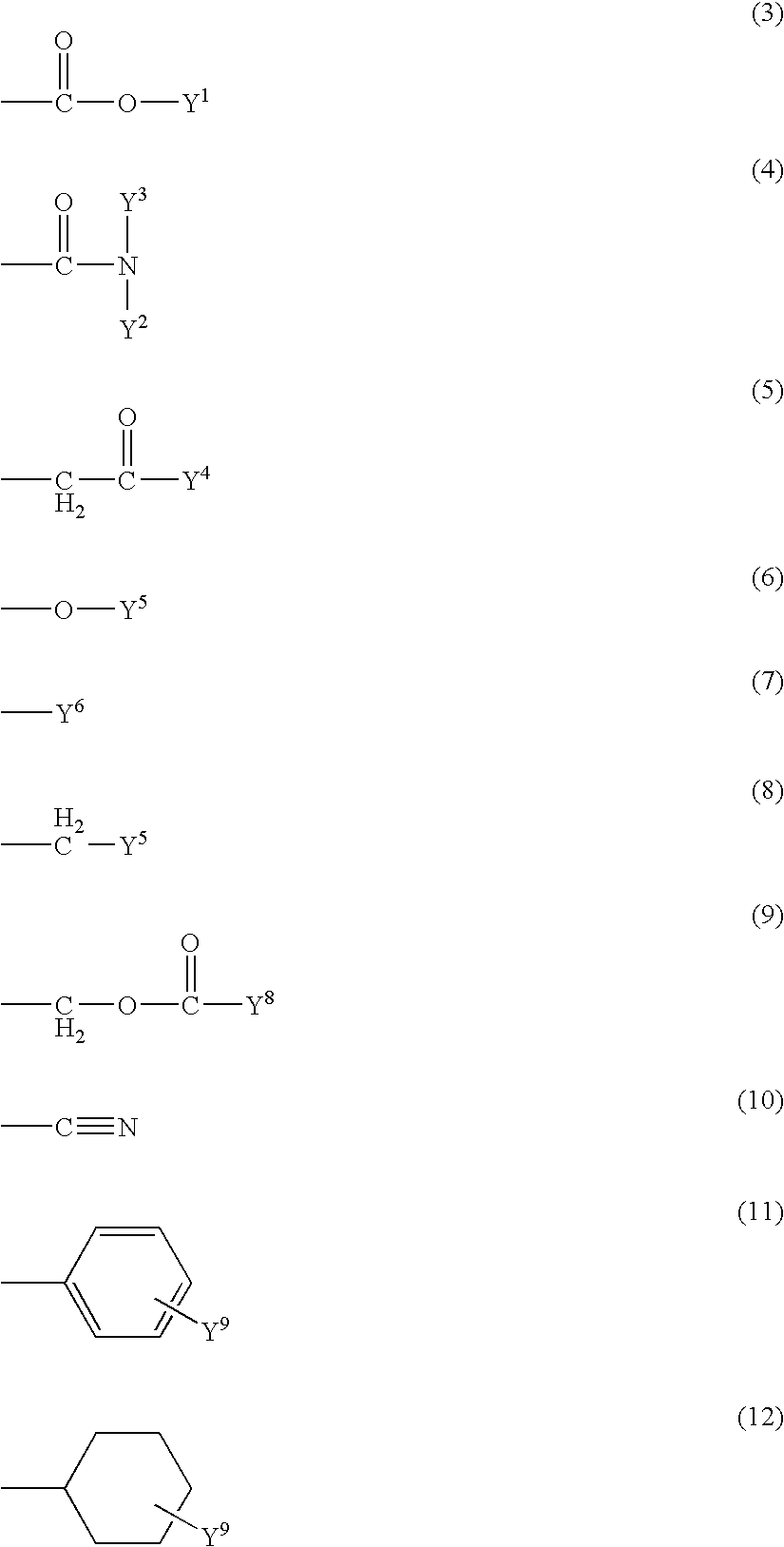Michael addition type urethane urea resin, production process therefor, adhesive, production process therefor, coating agent for forming ink receiving layer and recording material
a technology of urethane urea and urethane, which is applied in the direction of polyurea/polyurethane coatings, coatings, etc., can solve the problems of poor compatibility of acrylic resins with urethane resins, insufficient strength, and inability to copolymerize effectively
- Summary
- Abstract
- Description
- Claims
- Application Information
AI Technical Summary
Benefits of technology
Problems solved by technology
Method used
Image
Examples
synthesis example 1
[0314] 300 g of isophorone diamine (IPDA) and 300 g of toluene were charged in a four-necked flask equipped with a stirrer, a reflux cooling tube, a nitrogen introduction tube, a thermometer and a dropping funnel, to which 176 g of ethylacrylate (EA) and 184 g of 2-hydroxyethyl acrylate were dropped at a room temperature. After completion of dropping, they were reacted at 80.degree. C. for 1 hour and then 360 g of toluene were added to form a compound (1). A .sup.13C-NMR chart for the obtained compound (1) is shown in FIG. 1 and the assigned formula thereof is shown below.
[0315] Assigned Structural Formula: 9
synthetic example 2
[0316] 300 g of isophorone diamine (IPDA) and 300 g of toluene were charged in a four-necked flask equipped with a stirrer, a reflux cooling tube, a nitrogen introduction tube, a thermometer and a dropping funnel, to which 226 g n-butyl acrylate and 229 g of 4-hydroxybutyl acrylate were dropped at a room temperature. After completion of dropping, they were reacted at 80.degree. C. for 1 hour and then 455 g of toluene was added to form a compound (2). An NMR chart for the obtained compound (2) is shown in FIG. 2 and the assigned formula thereof is shown below.
[0317] Assigned Structural Formula: 10
synthesis example 3
[0318] 300 g of isophorone diamine (IPDA) and 300 g of toluene were charged in a four-necked flask equipped with a stirrer, a reflux cooling tube, a nitrogen introduction tube, a thermometer and a dropping funnel, to which 176 g of ethylacrylate and 229 g of 4-hydroxybutyl acrylate were dropped at a room temperature. After completion of dropping, they were reacted at 80.degree. C. for 1 hour and then 405 g of toluene was added to form a compound (3). An NMR chart for the obtained compound (3) is shown in FIG. 3 and the assigned formula thereof is shown below.
[0319] Assigned Structural Formula: 11
PUM
| Property | Measurement | Unit |
|---|---|---|
| viscosity | aaaaa | aaaaa |
| mol % | aaaaa | aaaaa |
| temperature | aaaaa | aaaaa |
Abstract
Description
Claims
Application Information
 Login to View More
Login to View More - R&D
- Intellectual Property
- Life Sciences
- Materials
- Tech Scout
- Unparalleled Data Quality
- Higher Quality Content
- 60% Fewer Hallucinations
Browse by: Latest US Patents, China's latest patents, Technical Efficacy Thesaurus, Application Domain, Technology Topic, Popular Technical Reports.
© 2025 PatSnap. All rights reserved.Legal|Privacy policy|Modern Slavery Act Transparency Statement|Sitemap|About US| Contact US: help@patsnap.com



